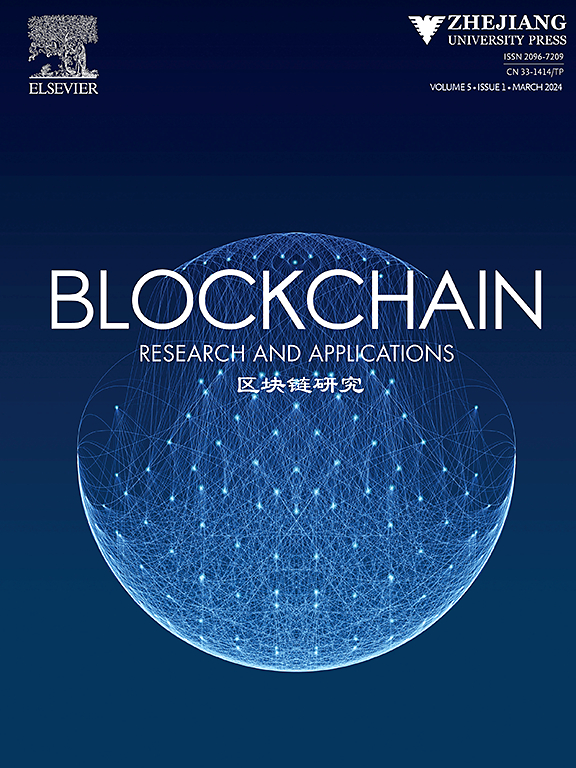Automated mechanism to support trade transactions in smart contracts with upgrade and repair
IF 5.6
3区 计算机科学
Q1 COMPUTER SCIENCE, INFORMATION SYSTEMS
引用次数: 0
Abstract
In our previous research, we addressed the problem of automated transformation of models, represented using the business process model and notation (BPMN) standard, into the methods of a smart contract. The transformation supports BPMN models that contain complex multi-step activities that are supported using our concept of multi-step nested trade transactions, wherein the transactional properties are enforced by a mechanism generated automatically by the transformation process from a BPMN model to a smart contract. In this paper, we present a methodology for repairing a smart contract that cannot be completed due to events that were not anticipated by the developer and thus prevent the completion of the smart contract. The repair process starts with the original BPMN model fragment causing the issue, providing the modeler with the innermost transaction fragment containing the failed activity. The modeler amends the BPMN pattern on the basis of the successful completion of previous activities. If repairs exceed the inner transaction’s scope, they are addressed using the parent transaction’s BPMN model. The amended BPMN model is then transformed into a new smart contract, ensuring consistent data and logic transitions. We previously developed a tool, called TABS+, as a proof of concept (PoC) to transform BPMN models into smart contracts for nested transactions. This paper describes the tool TABS+R, developed by extending the TABS+ tool, to allow the repair of smart contracts.
支持智能合约中贸易交易的自动机制,包括升级和修复
在我们之前的研究中,我们解决了使用业务流程模型和符号(BPMN)标准将模型自动转换为智能合约方法的问题。转换支持包含复杂的多步骤活动的BPMN模型,这些活动使用我们的多步骤嵌套交易事务概念来支持,其中事务属性由从BPMN模型到智能合约的转换过程自动生成的机制强制执行。在本文中,我们提出了一种修复智能合约的方法,该智能合约由于开发人员没有预料到的事件而无法完成,从而阻止了智能合约的完成。修复过程从导致问题的原始BPMN模型片段开始,向建模者提供包含失败活动的最内层事务片段。建模者在成功完成先前活动的基础上修改BPMN模式。如果修复超出了内部事务的范围,则使用父事务的BPMN模型对其进行处理。然后将修改后的BPMN模型转换为新的智能合约,确保数据和逻辑转换的一致性。我们之前开发了一个名为TABS+的工具,作为概念验证(PoC),将BPMN模型转换为嵌套事务的智能合约。本文描述了通过扩展TABS+工具开发的工具TABS+R,以允许智能合约的修复。
本文章由计算机程序翻译,如有差异,请以英文原文为准。
求助全文
约1分钟内获得全文
求助全文
来源期刊
CiteScore
11.30
自引率
3.60%
发文量
0
期刊介绍:
Blockchain: Research and Applications is an international, peer reviewed journal for researchers, engineers, and practitioners to present the latest advances and innovations in blockchain research. The journal publishes theoretical and applied papers in established and emerging areas of blockchain research to shape the future of blockchain technology.

 求助内容:
求助内容: 应助结果提醒方式:
应助结果提醒方式:


